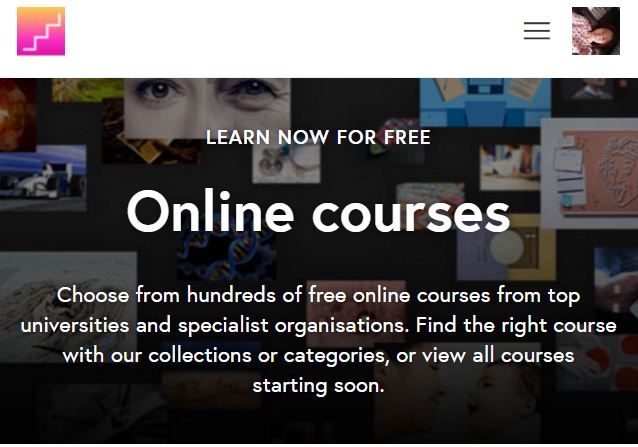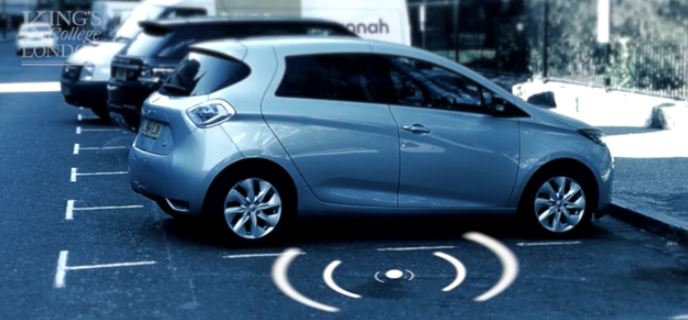
We offer a diverse selection of courses from leading universities and cultural institutions from around the world. These are delivered one step at a time, and are accessible on mobile, tablet and desktop, so you can fit learning around your life.
We believe learning should be an enjoyable, social experience, so our courses offer the opportunity to discuss what you’re learning with others as you go, helping you make fresh discoveries and form new ideas.
Internet of Things
Welcome to the course (2:10)
We will learn about what is an internet of thing. It has a great opportunity and threat at the same time. Throughout the course we will discuss about opinions on internet of things, platform, product and business. Fundamental and practicalities related to the internet of things will also be covered.
Is a smart phone an Internet of Things device? (2:53)
The women speaker said that we are using mobile web, so she doesn’t see mobile as an internet of thing. She thinks smart phones don’t communicate each other. Nevertheless, I disagree with her and agree with the man speaker. Smart phones are connected through the internet and communicate with many other devices such as other smart phones and blue-tooth speakers. They also have many censors such as GPS, motion, and touch. Smart phones are definitely internet of things.
The Internet of Things is a network of connected devices which communicate over the Internet, and they do so autonomously, machine to machine, without the need for human intervention.
The Internet of Things – this has been a long journey (6:16)
What is it?
Fourth industrial revolution is known as internet of things. Universally connected things and process provide us great experiences. Even we don’t have to order electronic devices command, they recognize us and do their work according to our preference.
What are the opportunities and predictions?
If we connect computers, sensors, mobile phone -basically everything- we can create great opportunities to industries and consumers. This is called the internet of everything. Since more people possess smart phones, and the number of sensors is increasing every year, the number of internet of things would be drastically increasing.
Some exciting examples of IoT (4:00)

Philips Hue: control the color of your lamps at home

Smart Parking: instruct drivers the best parking areas in the city
All these smart devices, internet of things, provide real utility solving real problems with real time data. They use censors and wireless connectivity, and analyze data.
The evolution and transformation of the Internet of Things (8:52)
The evolution and transformation of the Internet of Things
Google or Amazon didn’t build the internet in order to make their companies. Those companies were able to emerge thanks to the invention and availability of the internet. In the same way, pervasive network, wireless capability and the low cost sensors made the internet of things possible.
IoT is absolutely revolutionary but not the same way as the regular internet and steam engine. It didn’t suddenly arrive, but it is just a slow accretion of these new capabilities.
What is the impact on society?
Internet of things makes our lives easier and comfortable. However, people are able to track individuals through society. They know where you are, and all your information that are measured by internet of things. Therefore, cyber security is very important. Thus, internet of things is both fascinating engineering and technological challenge at the same time.
Smart Cities and the Internet of Things
Only thinking about hardware doesn’t work because it’s humans who make cities work. Next smart cities should link the best of technology and the hardware with the citizen engagement. It’s linking social innovation with technology innovation.
- Sensors: temperature, humidity, light, noise, pollution, pressure, torsion, tension, acceleration, position, images, magnetic fields, electric fields, etc
- Connectivity: Wi-fi, WAN, Zigbee
- Platform: receive+send data, store the data, process the data
- Analytic: raw bits and bytes -> the insights + value
- User Interface: how the data is presented to the final users
Mischa’s experience (2:17)
When he built IoT companies, he made several mistakes. First, he hasn’t talk to the clients. Second, he didn’t calculate his market and revenue analysis correctly. He over estimated the revenue. New markets with unproven business models need a lot of time. Third, in the first year, he did calculate the cost of the materials for the product, cost from customer services and many other things. It’s important to prepare all the aspects before start IoT business.
Zigbee: our first steps (5:27)
The first week of Internet of Things is mainly introduction to the Internet of Things. The level of the language used by the professor is moderate. The words he uses is not that difficult, and the intonation is easy to focus and comfortable to hear. His cheerfulness and enthusiastic attitude help me to be engaged in his lecture and stay interested. The navigation of this site was easy. I can simply click my courses and take the lecture. The lectures are divided into many sections, so I can see the progress. I this method motivate people because they can track of their progress. The videos are very short usually less than 10 minutes. This helps people to get started easily. The courses are categorized, so I can easily find classes that I am interested in. I recommend the site and course to my friends because it is really great way to learn new materials for free. The lectures were also pretty interesting. If I had the time, I would like to continue studying the full course since I can gain more knowledge and take many great courses in English.